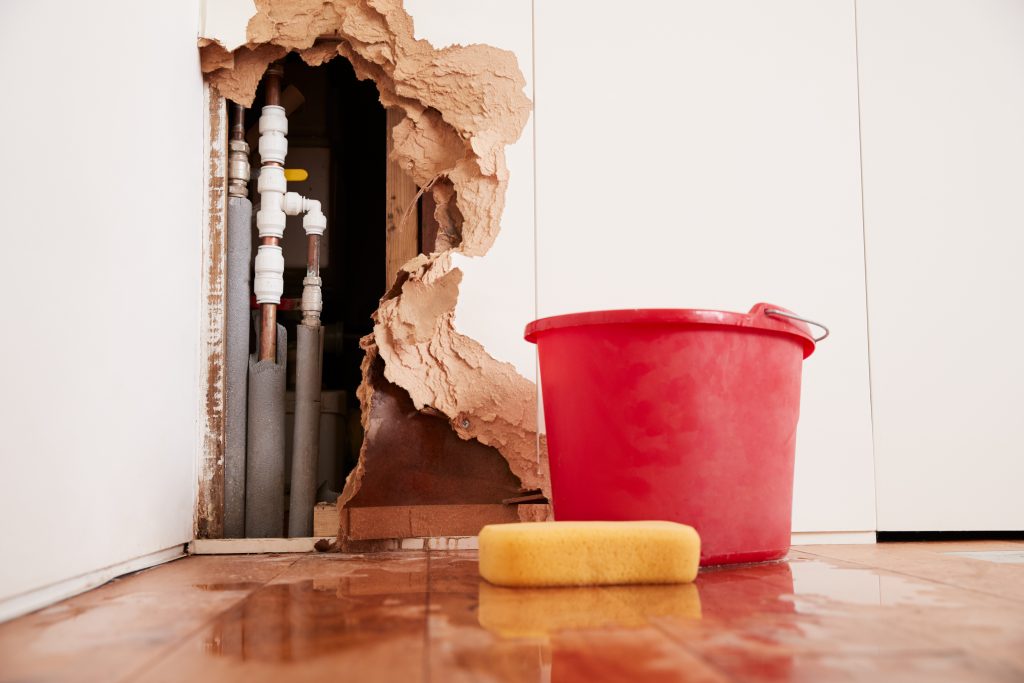Exactly how to Locate and also Repair Work Water Leaks-- A Comprehensive Overview
Exactly how to Locate and also Repair Work Water Leaks-- A Comprehensive Overview
Blog Article
The article in the next paragraphs about Locating water leaks is seriously informative. Read it yourself and figure out what you think of it.

Early discovery of leaking water lines can mitigate a potential catastrophe. Aside from saving you money, it will certainly minimize the stress as well as aggravation. The minute you discover a leak, calling your plumber for fixings is the most effective solution. Nonetheless, some small water leakages may not be visible. If you can not detect it with your naked eyes, here are some hacks that assist.
1. Check Out the Water Meter
Every house has a water meter. Checking it is a proven way that helps you uncover leakages. For beginners, switch off all the water sources. Make sure no one will purge, make use of the faucet, shower, run the cleaning machine or dishwasher. From there, go to the meter and watch if it will certainly transform. Because nobody is using it, there must be no movements. That shows a fast-moving leak if it relocates. If you spot no adjustments, wait an hour or 2 as well as inspect back again. This means you might have a slow-moving leak that could also be below ground.
2. Examine Water Consumption
Assess your water expenses and also track your water intake. As the one paying it, you need to discover if there are any type of disparities. If you spot sudden changes, despite your consumption being the same, it indicates that you have leakages in your plumbing system. Bear in mind, your water bill need to drop under the same variety on a monthly basis. A sudden spike in your bill shows a fast-moving leak.
On the other hand, a steady increase on a monthly basis, despite having the very same routines, shows you have a slow-moving leak that's likewise gradually rising. Call a plumber to thoroughly check your residential or commercial property, particularly if you feel a warm area on your floor with piping underneath.
3. Do a Food Coloring Examination
When it pertains to water intake, 30% comes from commodes. Examination to see if they are running appropriately. Drop flecks of food shade in the container as well as wait 10 mins. There's a leak between the tank as well as dish if the color in some way infiltrates your dish throughout that time without flushing.
4. Asses Exterior Lines
Don't neglect to inspect your exterior water lines also. Test faucets by attaching a garden tube. Must water permeate out of the connection, you have a loose rubber gasket. Replace this and also guarantee all connections are tight. It will certainly help get it professionally examined and also preserved every year if you've got a lawn sprinkler system. One little leakage can throw away lots of water and also surge your water bill.
5. Analyze the situation and also check
Home owners ought to make it a practice to check under the sink counters and also even inside cabinets for any bad odor or mold growth. These 2 warnings show a leak so prompt focus is required. Doing routine evaluations, even bi-annually, can conserve you from a major issue.
Examine for discolorations and deteriorating as the majority of pipelines as well as devices have a life expectancy. If you presume dripping water lines in your plumbing system, do not wait for it to rise.
Early discovery of leaking water lines can reduce a prospective catastrophe. Some little water leaks might not be noticeable. Checking it is a guaranteed means that aids you find leaks. One tiny leakage can lose tons of water and also increase your water expense.
If you suspect leaking water lines in your plumbing system, don't wait for it to intensify.
WARNING SIGNS OF WATER LEAKAGE BEHIND THE WALL
PERSISTENT MUSTY ODORS
As water slowly drips from a leaky pipe inside the wall, flooring and sheetrock stay damp and develop an odor similar to wet cardboard. It generates a musty smell that can help you find hidden leaks.
MOLD IN UNUSUAL AREAS
Mold usually grows in wet areas like kitchens, baths and laundry rooms. If you spot the stuff on walls or baseboards in other rooms of the house, it’s a good indicator of undetected water leaks.
STAINS THAT GROW
When mold thrives around a leaky pipe, it sometimes takes hold on the inside surface of the affected wall. A growing stain on otherwise clean sheetrock is often your sign of a hidden plumbing problem.
PEELING OR BUBBLING WALLPAPER / PAINT
This clue is easy to miss in rooms that don’t get much use. When you see wallpaper separating along seams or paint bubbling or flaking off the wall, blame sheetrock that stays wet because of an undetected leak.
BUCKLED CEILINGS AND STAINED FLOORS
If ceilings or floors in bathrooms, kitchens or laundry areas develop structural problems, don’t rule out constant damp inside the walls. Wet sheetrock can affect adjacent framing, flooring and ceilings.
https://www.servicemasterbyzaba.com/blog/how-to-detect-water-leakage-in-walls/

I was shown that write-up on Leaking water lines through a good friend on a different blog. You should take a moment to promote this content if you enjoyed reading it. Thanks for your time invested reading it.
Report this page